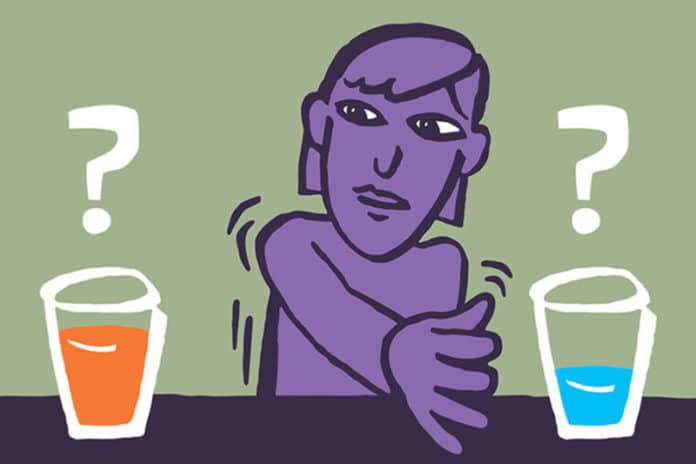Our everyday life is full of such decision dilemmas and uncertainty. We constantly have to choose between options.
Some people are naturally inclined to take more chances, while others prefer to hold on to what they know best.
This is all about choices. And our brain deals with uncertainty when making choices.
The topic- how brain neurons influence choices-has been largely studied from ethological and theoretical perspectives.
Sets of brain cells just above your eyes fire as you weigh your options. Various studies on animals have suggested that each option activates a distinct set of neurons in the brain—the more enticing the offer, the faster the corresponding neurons fire.
Now, a new study in monkeys by the Washington University School of Medicine in St. Louis– has shown that the activity of these neurons encodes the value of the options and determines the final decision.
During the study, scientists allowed monkeys to choose between different juice flavors. By changing the neurons’ activity, the specialists changed how engaging the monkeys found each option, driving the animals to settle on various decisions.
A nitty gritty comprehension of how choices are valued and decisions made in the brain will help scientists see how decision-making turns out wrong in people with addiction, eating disorders, depression, and schizophrenia.
Senior author Camillo Padoa-Schioppa, professor of neuroscience, economics, and biomedical engineering, said, “In several mental and neuropsychiatric disorders, patients consistently make poor choices, but we don’t understand exactly why. Now, we have located one critical piece of this puzzle. As we shed light on the neural mechanisms underlying choices, we’ll gain a deeper understanding of these disorders.”
“We found neurons encoding subjective values, but value signals can guide all sorts of behaviors, not just choice. They can guide learning, emotion, perceptual attention, and aspects of motor control. We needed to show that value signals in a particular brain region guide choices.”
Scientists conducted two experiments to study the association between values encoded by neurons and choice behavior. In one experiment, the specialists repeatedly presented monkeys with two drinks and recorded their selections. Different flavors included lemonade, grape juice, cherry juice, peach juice, fruit punch, apple juice, cranberry juice, peppermint tea, kiwi punch, watermelon juice salted water.
The monkeys frequently favored one flavor over another, yet they additionally preferred to get more instead of less, so their choices were not in every case simple. Each monkey indicated its choice by looking toward it, and the chosen drink was delivered.
Scientists placed tiny electrodes in each monkey’s orbitofrontal cortex. The electrodes painlessly stimulate the neurons that represent the value of each option.
When delivering a low current through the electrodes while a monkey was offered two drinks, neurons dedicated to both options began to fire faster.
From the monkey’s perspective, both options became more appealing, but, because of the way values are encoded in the brain, the appeal of one option increased more than that of the other. The upshot is that low-level stimulation made the animal more likely to choose one particular option, predictably.
In another investigation, the monkeys saw the first option, then the other, before they settled on a choice. Conveying a higher current while the monkey was considering about one alternative disrupted the computation of value taking place at that time, making the monkey bound to pick whichever choice was not upset. This outcome demonstrates that qualities figured in the orbitofrontal cortex are a vital part of making a choice.
Padoa-Schioppa said, “When it comes to this kind of choice, the monkey brain and the human brain appear very similar. We think that this same neural circuit underlies all sorts of choices people make, such as between different dishes on a restaurant menu, financial investments, or candidates in an election. Even major life decisions like which career to choose or whom to marry probably utilize this circuit. Every time a choice is based on subjective preferences, this neural circuit is responsible for it.”
Journal Reference:
- Ballesta S, Shi W, Conen KE, Padoa-Schioppa C. Values Encoded in Orbitofrontal Cortex Are Causally Related to Economic Choices. Nature, 2020. DOI: 10.1038/s41586-020-2880-x
